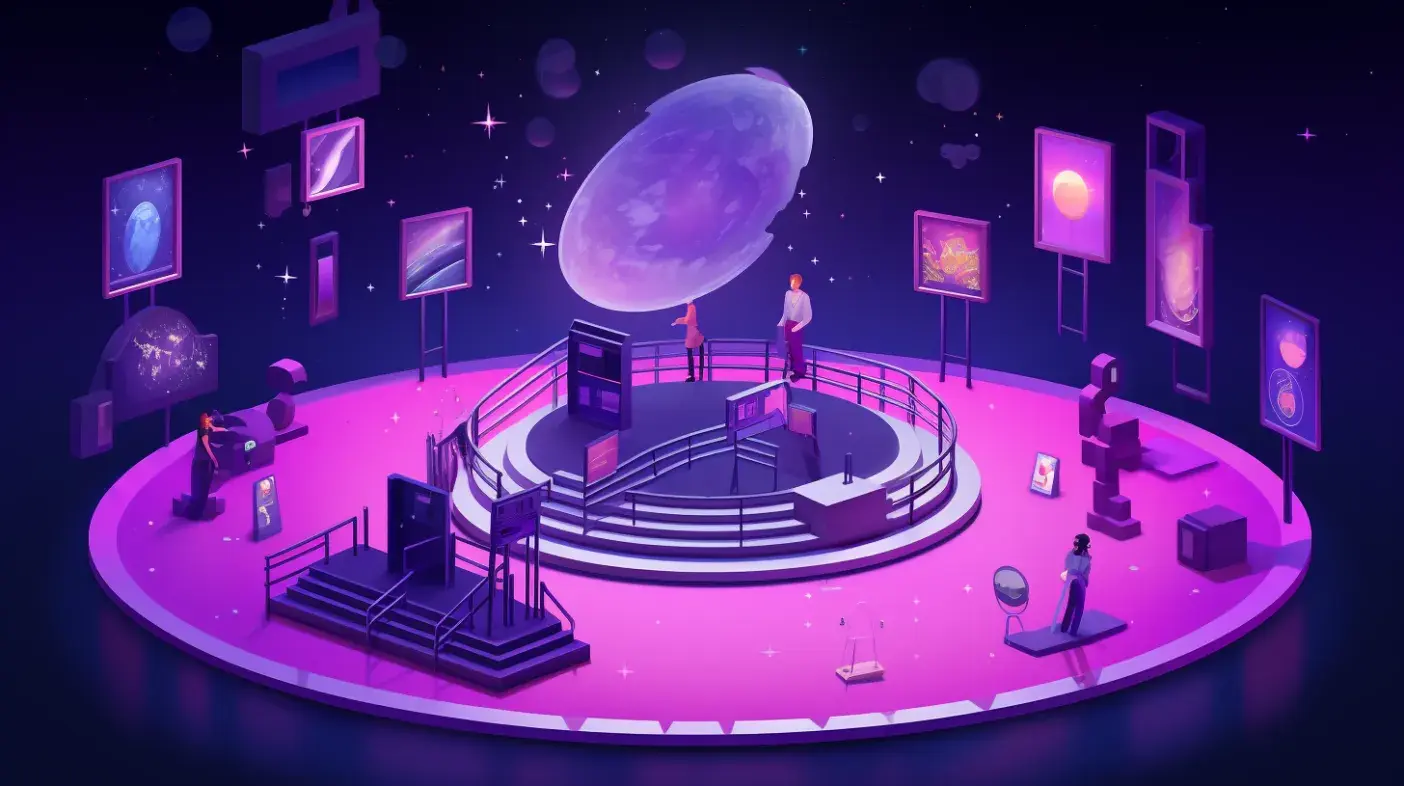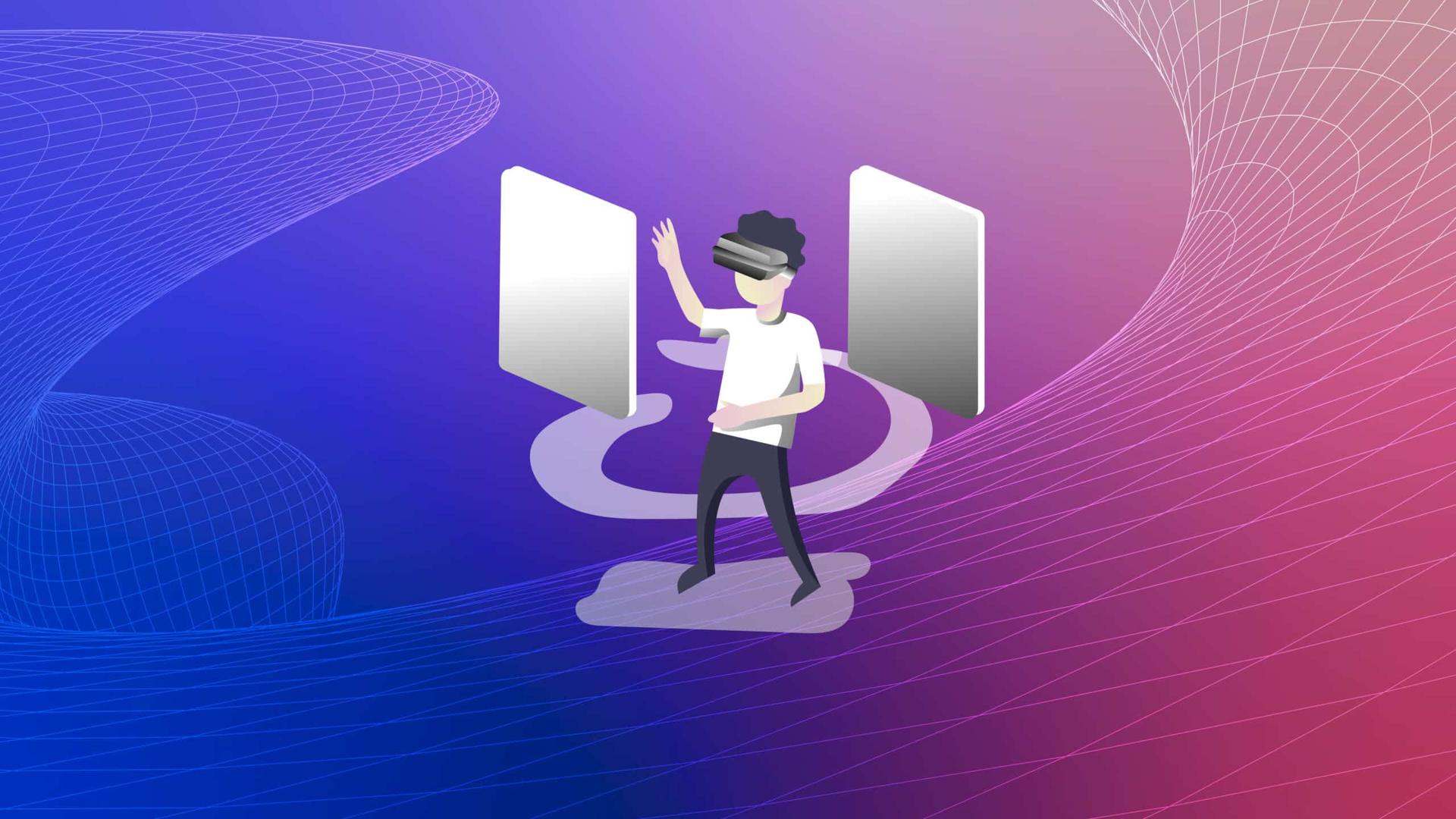Metaverse Museum: How Virtual Reality Redefines Exhibitions

The metaverse concept has gained significant traction, and with it, the metaverse museum has emerged as a fascinating development in the world of art and culture.
The metaverse museum represents a convergence of technology, creativity, and human expression, offering a glimpse into the future of art exhibitions. This digital frontier, often called "the art of the future," redefines how we experience and appreciate art.
Join Metastack as we explore the concept of the metaverse museum and how virtual reality (VR) is transforming the art world through meta art galleries and museums.
Understanding the Metaverse Museum
The metaverse museum is an innovative approach to displaying art, leveraging virtual reality technology to create immersive and interactive experiences.
It transcends the limitations of physical space and offers artists, curators, and visitors unprecedented opportunities to engage with art in unique and captivating ways. Here's how it is shaping the future of art exhibitions:
Infinite exhibition space
In the metaverse museum, the physical constraints of traditional museums are eliminated.
Artists can exhibit their work without worrying about available wall space or the need to transport artworks to different locations. This limitless canvas allows for the display of a vast and diverse range of art forms.
Global accessibility
The metaverse museum is accessible to anyone with an internet connection and a VR headset. This global reach democratizes art, making it available to audiences worldwide, breaking down geographical barriers, and enabling a more inclusive appreciation of art.
Immersive experiences
Virtual reality technology allows visitors to step inside artworks, walk through virtual galleries, and even interact with the art in previously impossible ways. It's a truly immersive experience beyond simply observing art on a wall.
Read: Metaverse Art: The Creativity In Virtual Worlds
The Rise of the Metaverse Museum
As the metaverse continues to expand, so does the concept of the metaverse museum. These institutions are dedicated to preserving, exhibiting, and celebrating digital art and virtual experiences.
The metaverse museum is an integral part of the metaverse's cultural landscape:
Digital preservation
Metaverse museums are crucial in preserving digital art and virtual experiences for future generations. They act as digital archives, ensuring that these creations remain accessible and intact over time.
Curated collections
Like traditional museums, metaverse museums curate collections of digital art, showcasing the best and most influential works in the metaverse. These collections can include everything from VR sculptures to immersive video installations.
Educational initiatives
Metaverse museums offer educational programs and resources to help visitors better understand and appreciate digital art. These initiatives can include virtual tours, workshops, and discussions with artists and curators.
Read: Immersive Learning: 10 Case Studies Of Educational Initiatives In Virtual Worlds

Meta Art Galleries
A significant part of the metaverse museum infrastructure is meta art galleries. These virtual spaces serve as platforms for artists to showcase their creations, experiment with new mediums, and interact with their audience in novel ways.
Virtual exhibitions
Meta art galleries host virtual exhibitions where artists can curate and present their work in a way that mirrors the traditional gallery experience. Visitors can explore these exhibitions at their own pace, appreciating art in a 3D environment.
Interactive art
Some meta art galleries incorporate interactive elements into the art itself. Visitors can touch, manipulate, or even contribute to the art within these virtual spaces. This dynamic interaction blurs the lines between creator and audience, fostering a sense of collaboration.
Artistic freedom
The metaverse empowers artists to experiment and push the boundaries of their craft.
Digital art, augmented reality installations, and immersive experiences are just a few examples of the possibilities that meta art galleries' possibilities. Artists are no longer confined by the limitations of physical materials.
Read: Virtual Art: How NFT Will Make You Money
The Impact on Artists and Visitors
The metaverse museum and meta art galleries are changing how art is displayed and redefining the relationship between artists and their audiences.
Empowering artists
The metaverse provides artists with new avenues for self-expression and exposure. They can experiment with technology, collaborate with other creators, and reach a global audience, ultimately expanding their creative horizons.
Engaging audiences
Virtual reality and immersive experiences captivate visitors, encouraging them to engage more deeply with art. Visitors actively participate in the creative process, enhancing their understanding and appreciation of the artworks.
Fostering community
The metaverse has created a vibrant community of artists, collectors, and enthusiasts passionate about digital art and virtual experiences. Online forums, social platforms, and virtual meetups allow individuals to connect and exchange ideas in ways that transcend physical boundaries.
Read: The Future Metaverse Events: Sports, Conferences, And Gatherings in the Metaverse
Technologies that Fuel Metaverse Museum
Metaverse museums are at the forefront of art and technology convergence, utilizing cutting-edge innovations to reshape the way we experience and appreciate art:
Virtual and Augmented Reality (VR/AR)
In a metaverse museum, users have VR headsets to explore 360-degree virtual spaces, interact with artworks, and engage in a genuinely immersive metaverse museum experience.
Spatial audio
This technology enhances the metaverse museum experience by providing visitors with realistic audio feedback, making them feel like they are indeed present within the virtual art space.
Haptic feedback
Haptic feedback devices enhance the metaverse museum encounter by providing tactile sensations to users when interacting with virtual art objects.
This technology allows visitors to feel textures, and temperatures and simulate touch interactions within the metaverse museum environment, deepening their immersion.
Artificial Intelligence (AI)
AI plays a multifaceted role in metaverse museums. It assists in curating the digital collections within these virtual spaces and contributes to creating unique digital artworks.
High-resolution displays
High-resolution displays are instrumental in metaverse museums, ensuring that the digital art showcased within these virtual spaces is exhibited at the highest visual fidelity possible.
These technologies combine to transform art appreciation, making metaverse museums a dynamic and evolving art space at the intersection of art and technology.

Challenges and Considerations
While the metaverse museum holds immense promise, it is not without its challenges and considerations:
Digital preservation
Ensuring digital art's long-term preservation and authenticity in the metaverse museum presents a unique set of challenges. Artifacts can become obsolete, and platforms can change, making it crucial to establish robust preservation strategies.
Access and inclusivity
Only some have access to the technology required to explore the metaverse museum. To fully embrace the art of the future, efforts must be made to bridge the digital divide and make virtual reality more accessible.
Copyright and ownership
The digital nature of the metaverse raises questions about copyright, ownership, and intellectual property. Artists and institutions must navigate these legal and ethical considerations to protect creators' rights.
Future of Metaverse Museum
The future of metaverse museum holds immense promise and potential as they evolve and shape how we interact with art and culture. Here are some critical aspects of what the future may hold for metaverse museums:
Expanding digital art forms
Metaverse museum may include advancements in virtual sculptures, generative AI art, immersive mixed reality experiences, and interactive installations that push the boundaries of creativity and technology.
Cross-platform integration
Visitors might explore metaverse museums through VR headsets, AR glasses, web browsers, and even within popular virtual worlds and gaming platforms. This cross-platform integration will enhance accessibility and reach.
Enhanced interactivity
Visitors of metaverse museum may be able to collaborate with artists in real time, modify or create art within virtual galleries, and engage in gamified educational experiences that make art appreciation more interactive and engaging.
Read: Metaverse Gaming: The Future Of Interactive Experiences
Artificial intelligence curators
In a metaverse museum, AI curators will help visitors discover art tailored to their preferences, curate personalized virtual museum tours, and provide in-depth information about artworks, artists, and art movements.
Physical-virtual hybrid experiences
The boundary between physical and virtual art will blur further. Some metaverse museums may have physical hubs where visitors can seamlessly engage with physical and digital art, bridging the physical and virtual worlds.
Read: The Renaissance Of Virtual Arts And Literature

Final Thoughts
The metaverse museum and meta art galleries represent a thrilling evolution in art and culture.
These digital spaces push the boundaries of what is possible in art exhibitions, offering immersive and interactive experiences that engage and inspire audiences like never before.
As the metaverse continues to expand and evolve, it will undoubtedly shape the future of art, providing artists with unprecedented opportunities for creativity and offering visitors a new way to connect with the art of the future.
The metaverse museum is a testament to the endless possibilities that technology can bring to the world of art, and it is an exciting journey that is just beginning.
Keep up with Metastack to explore the future of art in the metaverse!



